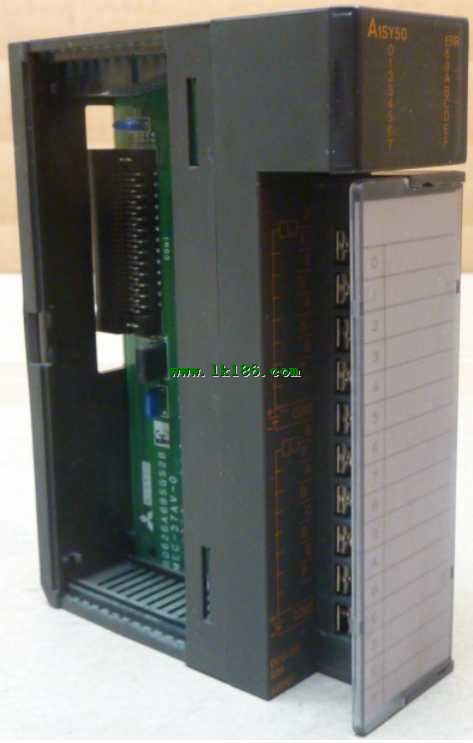
Input channel number: 2.
Output channel number: 1.
Occupy I/O points: 32.
A1S63ADA analog input / output combination components can be analog / digital / digital / analog conversion,
The input and output signals can be voltage or current,
Offset and gain can be set and stored A1SY50.
The length of time required to execute the instruction, the length of the user''s program, the type of instruction, and the speed of the CPU execution are very significant,
Generally, a scanning process, the fault diagnosis time,
Communication time, input sampling and output refresh time is less,
The execution time is accounted for the vast majority of A1SY50.
The response time of PLC is the interval between the time of the change of the external output signal of the PLC and the time of the change of the external output signal which is controlled by it,
Lag time, this is the time constant of the input circuit,
The time constant of the output circuit, the arrangement of the user statement and the use of the instruction,
The cycle scan mode of PLC and the way of PLC to refresh the I/O and so on A1SY50 MITSUBISHI A1SY50.
This phenomenon is called the I/O delay time effect. Output type: relay output.
Output points: 8 points.
OFF leakage current: -.
Output protection function: No.
Rated load voltage / current: DC24V/AC240V/2A.
External connection: 2 wire.
According to the external connection mode and the external equipment input and output specifications,
Choose from a rich product lineup MITSUBISHI A1SY50.
Finger protection through the upper part of the terminal,
The human body will not be exposed to live parts,
Therefore, the terminal station type remote I/O module can be directly mounted to the machine tool MITSUBISHI A1SY50.
Output type: transistor drain.
Output points: 16 points.
Load voltage: DC12/24.
Load current: 0.5A.
Connection mode: terminal row.
Common public end points: 8.
Structured text language is a programming language that describes a program with a structured description of the text.
It is a programming language similar to a high level language. In large and medium
Structured text is often used to describe the relationship between the various variables in the control system based on the PLC system.
Mainly used for other programming languages more difficult to achieve the user program.
The structured text programming language uses the computer description method to describe the various kinds of relations between the various variables in the system,
Complete the required function or operation.
Most PLC manufacturers use structured text programming language similar to BASIC language, PASCAL language or C language and other advanced languages,
But in order to be convenient, the expression methods of the statement and the types of statements are simplified.
Structured text programming language features: the usee of high-level language programming, you can complete the complex control operations,
Need to have a certain level of computer knowledge and programming skills,
Higher requirements for engineering designers A1SY50. Poor visibility and operability.
